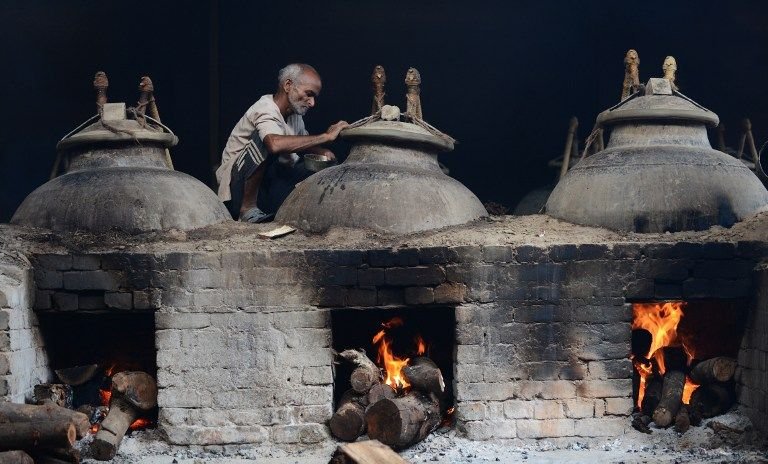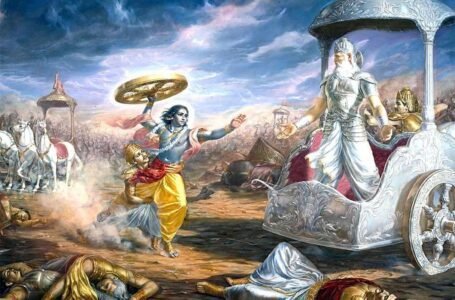Fragrance of the Ages: The Lost Scents of Ancient India

-Vani Mishra
Well before the world was familiar with India for its glittering silks or its glittering spices, there existed another jewel it took unobtrusively through the centuries the perfume. Perfumes in ancient India were not mere indulgences for the affluent. They were filaments spun into the very texture of everyday life, into love and reverence, into festivities and departures, into the silent times of aloneness and the pompous rituals of kings. One whiff could tell of yearning, of piety, of the taste of monsoon rains on parched earth. To stroll through the bazaars of Pataliputra or Ujjain two millennia ago would not be merely to stroll among merchants and craftsmen. It would be to stride through a living carpet of scents. There would be the rich earthiness of sandalwood wafting up from open stalls, the clean sweetness of jasmine oozing from baskets, the biting resinous smoke of guggul winding in the air. It was a dialect that required no words. Ancient India knew about fragrance in a manner we can hardly comprehend today. Fragrance was not simply for vanity. It was a means of attuning the human spirit to the cycles of nature and the world of the divine. Not only was life expressed in terms of years and seasons but also in terms of imperceptible perfumes that surrounded them.
The Sacred Roots of Scent
The most ancient Sanskrit hymns already mention perfume as the sacred. In the Atharva Veda, perfumed oils, flowers, and resins come as offerings to the deities. Scent was considered a path between heaven and earth. Sandalwood paste, with its refreshing touch and heavy scent, was said to appease the gods themselves. In temples, marigold and rose garlands draped across idols would emit their fragrance into the hot air. Priests made mixes of herbs and flowers by hand, grinding them for a long while until their perfume bloomed. Frankincense or guggul smoke was not merely nice-smelling, it was a conveyance for prayer, driving human words skyward on perfumed clouds. Perfume was not an adjunct to piety. Perfume was piety itself, turned into something that could be grasped by the senses.
Perfume and the Crown
To ancient Indian kings and queens, perfume was not a luxury. Perfume was a statement of royalty. In the Mauryan court of Pataliputra, exotic and expensive fragrances poured in from all sides of the subcontinent. Musk from the snow-white summits of the Himalayas, saffron from Kashmir’s fields, camphor from Bengal’s green jungles, sandalwood from the southern groves each with a story, each with a journey, each with a price. In palace chambers, perfumes were treasured like jewels. Recipes were hidden secrets, whispered from master perfumer to apprentice. Queens bathed in rosewater and were anointed with pasty rich compositions of aromatic oils. Their clothes were kept with bags of aromatic herbs so that each gesture emitted a delicate perfume. Kings also entered the realm of fragrance. Sandalwood paste was worn by them in court, both to keep the skin cool during hot weather and to show uprightness. Incense was kept alight perpetually in royal apartments, and even the horses and elephants of a royal procession could be scented so that even the air proclaimed the majesty of the king.
The Science Behind the Beauty
Ancient Indian perfume was not merely an art. It was a science. The Charaka Samhita, the great Ayurvedic work, explains how various Odors would influence the body and mind. Some were thought to soothe the soul, others to clarify the mind, others to restore bodily balance. The perfumery was labour-intensive. The flowers, such as jasmine and rose, were picked at daybreak when their fragrance was strongest. They were distilled with the deliberate slowness of artisans who knew that speed would destroy the essence of the scent. Oils were scented and, at times, left to mature for months to give character to their nature. Layering was an art perfumers learned many years ago before the term had been coined. Sandalwood might be combined with saffron and grounded with vetiver, with transient top notes from just-picked flowers. These perfumes were living sculptures, developing on the skin hour by hour.
Perfume in the Marketplace
While the most complicated perfumes adorned palaces and temples, fragrance was for all. In city markets, flower vendors sold garlands plucked early that morning. Small bags of perfumed powder, bowls of fragrant herbs, and branches of incense made from resin and pounded bark were sold by merchants. Festivals turned cities into scented worlds. Marigold flowers festooned doorways, incense spiralled into the air, rosewater was showered into the atmosphere. Weddings were scented ceremonies, each ritual walked hand in hand with a corresponding smell the sweet flower of tuberose, the earthy smell of sandalwood, the heavy note of jasmine. Even rural life had its scents. There was the damp smell of earth after the monsoon rains, the pungent scent of fresh hay, the piney air of forest glades in summer.
Perfume and the Art of Love
The Kama Shastra refers frequently to scent, not as decoration but as a constituent of love itself. Lovers were instructed to anoint their bodies, their hair, even their bedrooms. Some mixtures were thought to stimulate desire, others to calm or to kindle tenderness. Love letters could be delicately perfumed with musk or saffron so that the recipient might sense the presence of the giver as if they stood at hand. Poet’s spoke of lovers whose loveliness was reflected in the scent of flowers. To thread jasmine into a loved one’s hair was to thread a vow into the very air. Perfume was no longer merely a delight but a tongue for the hearts.
The Trade Routes of Aroma
India’s location in the ancient world rendered it a centre for the trade of perfumes. Maritime trade brought frankincense and myrrh from Arabia. Caravans brought camphor from China and Central Asian saffron. Indian sandalwood and jasmine went in return to far-off courts and temples, where they were as highly valued overseas as they were locally. These interactions also brought knowledge. Distillation, blending, and preservation techniques poured in with the caravans and ships. But even with these influences, India preserved its own tradition of fragrance, always keeping scent tied to ritual, beauty, and the cycles of the seasons.
A Vanishing World
The ancient Indian perfumes persist in memory and in sporadic practice, though a good deal has been lost. Industrial perfumes have displaced most of the traditional attars. Synthetic fragrances fill the shelves where there was once only the painstaking labour of distillation. And still, in some places, the traditional ways persist. In Kannauj town, perfumes are still prepared by families in the same way their forbears did several centuries ago. In temples throughout India, the aroma of sandalwood and jasmine still wafts over devotees. After a monsoon rain, the land still gives out that same heady scent it had in Mauryan times. To venture into the scents of ancient India is to enter a realm in which beauty was not distinct from life, in which flowers or attar could be an offering, a medicine, a pronouncement of love, and an assertion of power all at once.
Conclusion
When we attempt to picture the cities of bygone days, we tend to think of them only in terms of what they sounded or looked like. But if we ever hope to grasp them, we must be able to smell them as well. We must inhale the sandalwood wafting from a temple, the rosewater misting in an alleyway, the musk borne on the tunic of a passing lord, the incense curling dreamily into the evening air. It is only then that we can start to understand what it was like to live in an era where smell was as much a part of life as light or music. Ancient India was not only a civilization of builders and poets. It was a civilization of perfume, one that calculated its pleasures and its pains in terms of the vocabulary of the air.


